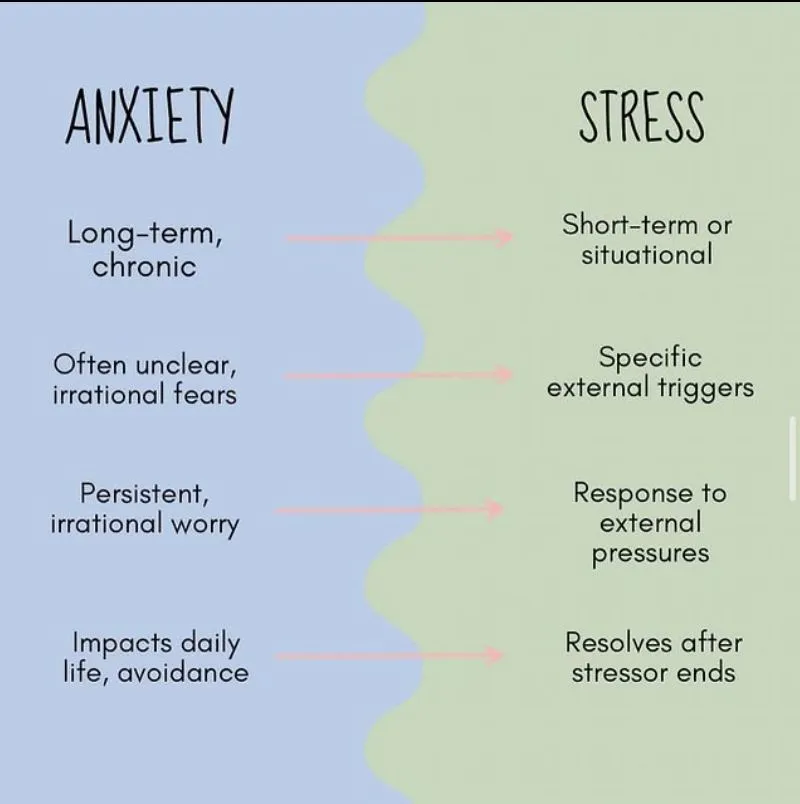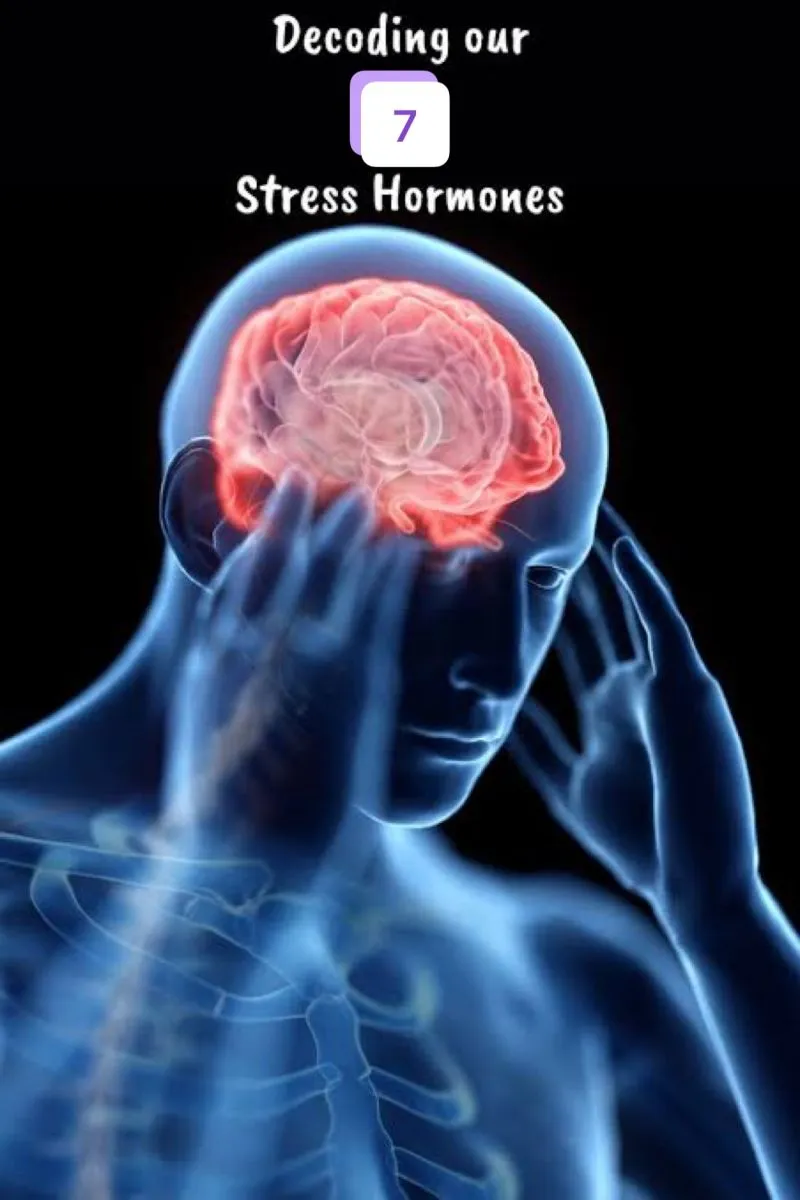In everyday conversations, we use 'stress' and 'anxiety' interchangeably, but they're clinically distinct. Learn how to tell the difference, recognize symptoms in yourself and others, and discover the right support strategies for each condition.
Why Understanding the Difference Between Stress and Anxiety Matters
In everyday conversations, we often use the words 'stress' and 'anxiety' interchangeably—'I'm so stressed about this presentation' or 'This deadline is giving me anxiety.' While both involve feelings of worry and physical tension, they're actually clinically distinct experiences that require different approaches to manage effectively. According to Mental Health First Aid research, it's important to know how to identify and differentiate signs of stress and anxiety, as stress is a common trigger for anxiety and catching anxiety symptoms early can prevent the development of an anxiety disorder. Understanding whether you or someone you care about is experiencing stress or anxiety isn't just helpful—it's essential for providing the right kind of support and finding the most effective coping strategies.
Stress: The Body's Response to External Pressure
What Stress Really Is
Stress is your body's natural reaction to external pressures or demands. It's typically short-term and arises in response to specific, identifiable triggers like a work deadline, relationship conflict, financial pressure, or major life changes. Stress activates your fight-or-flight response, flooding your system with hormones like cortisol and adrenaline to help you handle the challenge at hand.
Common Stress Triggers
Stress usually has a clear cause that you can point to: an upcoming exam, a job interview, moving to a new city, caring for a sick family member, or managing multiple responsibilities at once. These are real, external situations that require your attention and energy. The key characteristic of stress is that it's situational—it has a beginning, middle, and (usually) an end.
How Stress Affects You
During stressful periods, you might experience physical symptoms like headaches, muscle tension, fatigue, or changes in appetite. Emotionally, you may feel overwhelmed, irritable, or have trouble concentrating. The important thing about stress is that these symptoms typically resolve once the stressor is removed or the situation improves.
Anxiety: When Worry Becomes Persistent
Understanding Anxiety
Anxiety is more persistent and internal than stress. While stress is a reaction to something happening to you, anxiety is often a reaction to stress itself—or to perceived threats that may not even exist. Anxiety involves ongoing worry, fear, or dread that can persist even when there's no immediate danger or clear reason for concern.
When Anxiety Takes Over
Unlike stress, anxiety doesn't always have an obvious trigger. You might feel anxious about things that could happen, situations that are unlikely, or problems that don't actually exist yet. Anxiety tends to involve 'what if' thinking: 'What if I lose my job?' 'What if something bad happens to my family?' 'What if I'm not good enough?' These worries can feel very real and urgent, even when they're not based on immediate threats.
The Persistence Factor
The hallmark of anxiety is that it lingers. Even when external circumstances improve or the original stressor is resolved, anxiety can continue. It may shift from one worry to another, creating a cycle of persistent unease that interferes with daily life, relationships, work, or sleep.
Stress vs Anxiety: Side-by-Side Comparison
Duration and Timing
Stress: Short-term and situational, typically resolves when the stressor ends. Anxiety: Long-term and chronic, can persist even after the original trigger is gone. While you might be stressed about a specific event for days or weeks, anxiety can last for months or years, often shifting between different worries.
Triggers and Causes
Stress: Linked to specific, identifiable external triggers like deadlines, conflicts, or major life changes. Anxiety: Often has unclear, internal, or irrational triggers. May involve fear of things that haven't happened or may never happen. Sometimes there's no identifiable trigger at all—the anxiety just exists.
Impact on Daily Life
Stress: Usually temporary interference with daily activities, may actually motivate you to take action. Anxiety: Can lead to persistent avoidance of situations, ongoing interference with work, relationships, and daily functioning. May prevent you from taking action even when you want to.
Recognizing the Symptoms in Yourself and Others
Both stress and anxiety can cause similar physical symptoms—rapid heartbeat, sweating, muscle tension, and changes in sleep or appetite. However, the context and persistence of these symptoms can help you distinguish between the two.
Managing everyday anxiety requires different strategies than handling acute stress. When supporting others, pay attention to whether they're reacting to a specific situation (stress) or expressing ongoing, generalized worry (anxiety). The timing, triggers, and duration of their concerns can guide you toward the most helpful response.
What to Do About Stress: Practical Management Strategies
Address the Source
Since stress has identifiable external causes, you can often tackle it directly. This might involve time management, setting boundaries, asking for help with overwhelming responsibilities, or developing a plan to handle the challenging situation. Break large stressors into smaller, manageable steps.
Immediate Stress Relief
For acute stress, focus on quick relief techniques: deep breathing exercises, physical activity, taking breaks, getting adequate sleep, and maintaining healthy habits. These strategies help your body process stress hormones and return to baseline more quickly.
Building Stress Resilience
Long-term stress management involves building your overall resilience: regular exercise, maintaining social connections, practicing mindfulness or meditation, and developing healthy coping skills. The goal is to strengthen your ability to handle future stressors more effectively.
What to Do About Anxiety: Different Approaches for Persistent Worry
Challenge Anxious Thoughts
Since anxiety often involves irrational or unlikely fears, learning to question and challenge these thoughts is crucial. Ask yourself: 'Is this worry realistic?' 'What evidence do I have that this will actually happen?' 'What would I tell a friend who had this worry?' Cognitive techniques can help you develop a more balanced perspective.
Develop Anxiety-Specific Coping Skills
Anxiety management often requires specialized techniques: grounding exercises to manage panic, progressive muscle relaxation, mindfulness meditation to stay present rather than worrying about the future, and gradual exposure to feared situations to reduce avoidance. These skills take practice but can significantly reduce anxiety over time.
Consider Professional Support
Persistent anxiety often benefits from professional treatment. Cognitive Behavioral Therapy (CBT) is particularly effective for anxiety disorders, helping you identify and change thought patterns that fuel worry. In some cases, medication may also be helpful. Don't hesitate to seek professional help if anxiety significantly impacts your daily life.
Supporting Others: How Understanding the Difference Helps
When someone shares their struggles with you, understanding whether they're experiencing stress or anxiety can help you provide more effective support.
Supporting someone with mental health challenges starts with listening without trying to immediately fix their problems. If they're stressed about a specific situation, you might help them brainstorm solutions or offer practical assistance. If they're anxious, they may need more emotional validation and support in challenging their worry patterns rather than problem-solving. In both cases, avoid minimizing their experience or offering quick fixes. Sometimes the most helpful thing you can do is simply listen and validate that what they're going through is difficult.
When to Seek Professional Help
Red Flags for Stress
Seek help for stress if it's chronic and persistent (lasting months), affecting your physical health (chronic headaches, digestive issues, high blood pressure), interfering with work or relationships, or if you're using unhealthy coping mechanisms like excessive alcohol, drugs, or other risky behaviors. Chronic stress can lead to burnout and serious health problems if left unchecked.
Red Flags for Anxiety
Professional help for anxiety is recommended when worry significantly interferes with daily activities, you avoid situations due to anxiety, physical symptoms are severe or frequent (panic attacks, insomnia, digestive issues), or anxiety persists despite your best self-care efforts. If you're having thoughts of self-harm, seek immediate professional help.
Types of Professional Support
Various professionals can help: primary care doctors can assess physical symptoms and provide referrals, therapists specialize in talk therapy and coping strategies, psychiatrists can prescribe medication when appropriate, and support groups provide peer connection and shared coping strategies. Don't wait until you're in crisis—early intervention often leads to better outcomes.
The Bottom Line: Both Deserve Attention and Care
Whether you're dealing with stress or anxiety, both deserve attention and appropriate care. Stress isn't something to just 'push through,' and anxiety isn't something to be ashamed of or ignore. Understanding the difference helps you choose the right strategies and know when to seek additional support. Remember that it's possible to experience both stress and anxiety simultaneously, and sometimes chronic stress can develop into anxiety over time. The most important thing is to take your mental health seriously and seek the support you need, whether that's self-care strategies, conversations with trusted friends, or professional help. Your emotional wellbeing matters, and there are effective ways to manage both stress and anxiety when you understand what you're dealing with.





